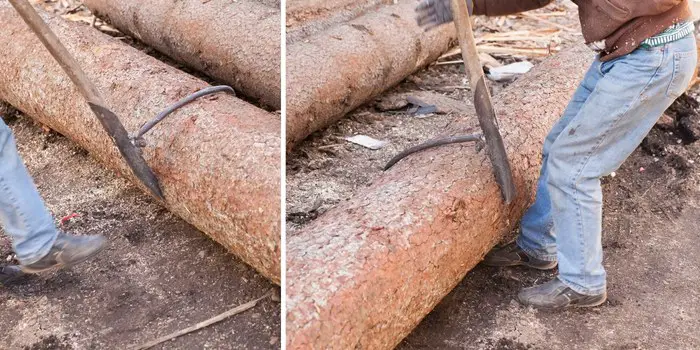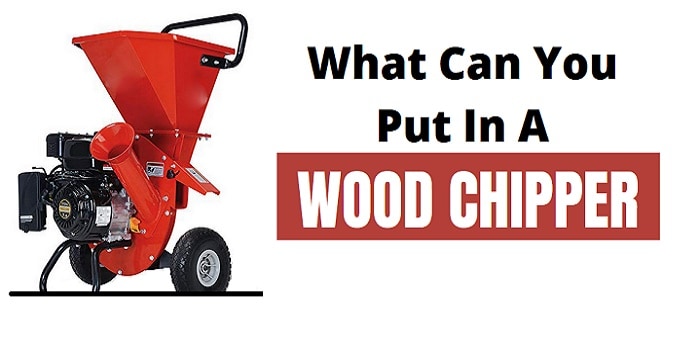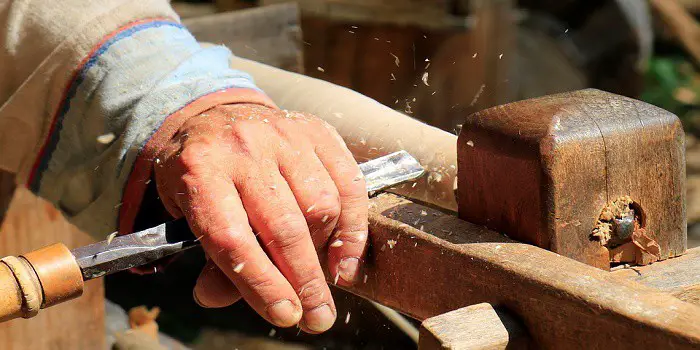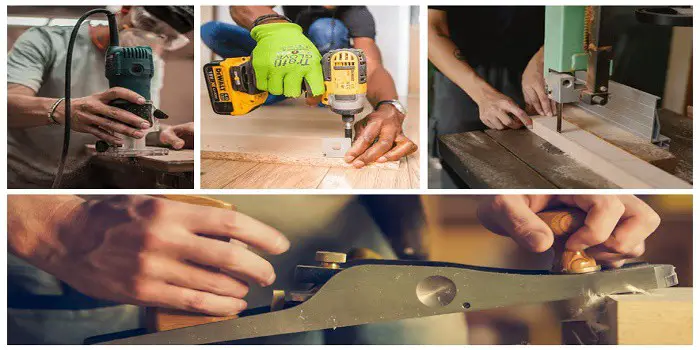
Wondering what’s a peavey tool and what you use it for? Let’s have a look.
Peaveys are most commonly used for moving and rolling logs. The pointed tip on the end of the peavey is perfect for separating the wood logs and sticking them in the ground or snow for sliding or leveraging the logs.
While Cant hooks and Peaveys are often spoken of interchangeably, Cant hooks are more commonly used for handling cants or logs (a cant is a partially sawn log).
Peaveys are an essential rolling tool for those in the logging industry, as well as arborists, landowners, tree care professionals, and sawmill operators.
A log peavey is an excellent addition to your toolkit if you frequently work with logs.
Cant Hook vs. Peavey: What’s the Difference?
Although not having the proper tool is worse, having to choose between two seemingly identical ones is still a difficult option.
This is certainly true of the cant hook and peavey. Both tools perform the same job and seem similar, but their differences start with how they are gripped. But the real difference is a personal preference.
To decide which one is right for your needs, it is best to discover what each tool is, what they do, and if there are any fundamental differences.
| Cant Hook | Peavey | |
|---|---|---|
| Edges | 2 | 1 |
| Design | Gripper foot with a flat end | Somewhat protruding spike |
| Best For | Superior and safer gripping of small logs | Splitting, separating, and gripping larger logs, even in log piles |
| Issues | Not ideal for larger logs or logging of large piles | It can sometimes be dangerous due to poor gripping. |
Cant Hook
A cant hook is quite distinctive as it features a long handle and is designed to pivot, lift, and move around logs. You often see cant hooks at sawmills along with woodworking shops.
The handle and design make it easy to move logs where you want them to be.
The hook found at the end of the handle grips the log on one side while the gripper foot grabs it from the other.
The hook itself is not quite as large as found on the peavey, but it does grip the logs quite well.
The solid grip means that you can move around smaller logs at the sawmill relatively easily. The benefits of the cant hook include the following.
- Two biting edges
- Versatile
- Safer than the Peavey
However, the cant hook is not perfect. They are not well suited for moving around larger logs as the grip simply is not big enough.
Plus, using the cant hook to move logs amid piles of logs can be cumbersome and time-consuming.
Peavey Tool
A peavey is superficially similar to a cant hook in that it does possess a hook-like structure at the end of a long handle.
However, the peavey has a spike instead of a gripper hook. This is the major difference between the peavey and the cant hook.
The spike allows the peavey to easily separate logs inside a big pile. This allows for the greater movement of mixed logs.
The hook on a log peavey is usually larger than on a cant hook.
You see, peaveys are used to move, pivot, and lift medium to large-size logs thanks to their hook, which can hold logs of larger diameters.
The benefits of using a peavey include the following.
- Separates Wood Quite Well
- Holds Medium to Larger-Size Logs
- Versatile
However, the peavey is not perfect and does have a couple of issues. The first is that the peavey does not have the more solid grip of the cant hook.
Logs are more likely to slip, leading to the second, more troublesome issue.
Peaveys can be dangerous because the grip is more likely to slip when holding, moving, or lifting larger logs.
How Do You Use a Cant Hook or Peavey Tool?
A peavey or a cant hook is not new, but they have a long history behind them.
A cant hook or peavey is a tool with a long handle and a movable metal hook or jaws on one end. The hook or jaws open and close around the log so that it can be lifted and moved.
The best way to use a cant hook is to place the hooked end under the log at the center of gravity.
The other end of the cant hook is placed on the ground, and the long handle is used as a lever to pry up on the log. The log is then moved to where it needs to go and placed down.
There are different sizes and styles of cant hooks or peaveys, but they all work the same way.
Some have a single metal hook or jaws, while others have two. And the handles of these similar tools can be made of wood or metal.
Which One to Choose Between, Cant Hook and Peavey?
The cant hook is a perfect choice if you are moving smaller logs around. However, the peavey is the better option if you are moving around medium to large logs, especially in a pile.
Of course, it may be that you can use both, depending on your situation.

Hi, I am Mark Garner a professional carpenter, woodworker, and DIY painter. I live in the small city of Peoria, Arizona as a semi-retired woodworker. I have started this blog with a simple motive to help you with my wood experience in this sector. If you like to know more about what I love doing and how it all got started, you can check more about me here.




